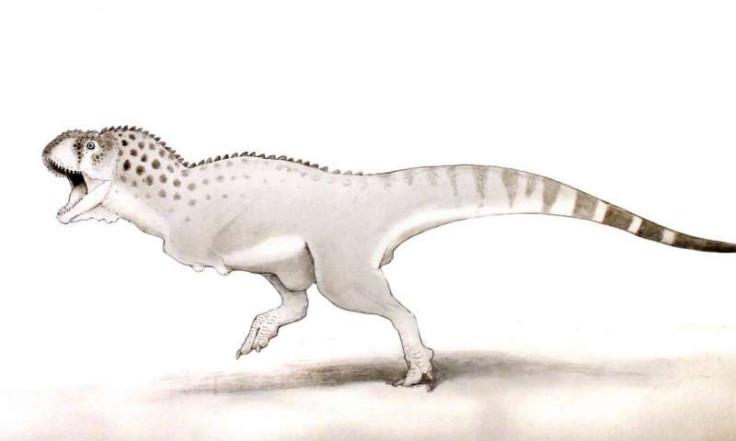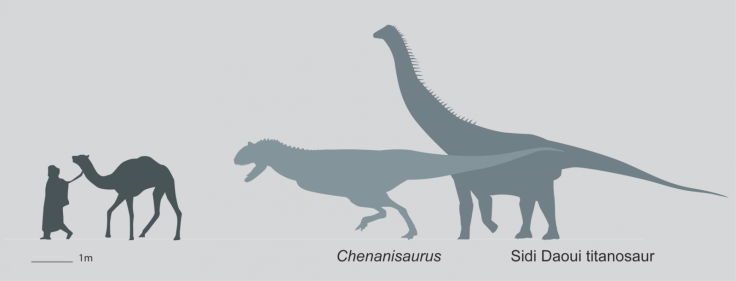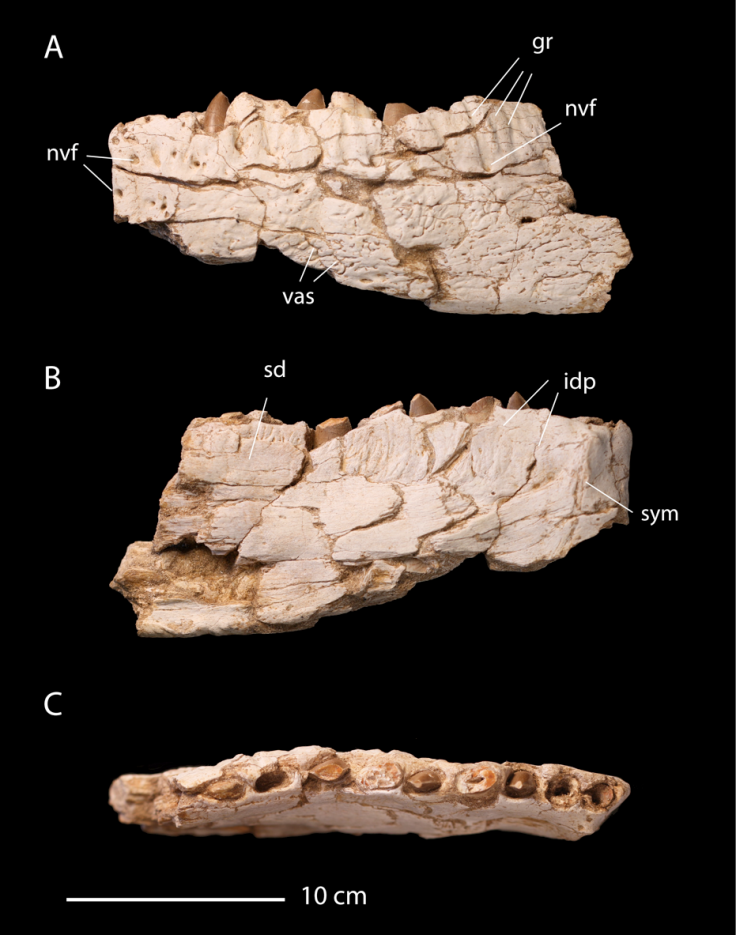Last dinosaur alive? 'African T-Rex' went extinct right at the end of their reign on Earth
The dinosaur had extraordinarily tiny arms.
A new species of dinosaur discovered in a phosphate mine in Morocco was one of the last dinosaurs to roam the Earth 66 million years ago.
The newly discovered species, named Chenanisaurus barbaricus, almost certainly would have felt the devastating effects of the asteroid strike that hit 66 million years ago.
The dinosaur lived about the same time as the North American Tyrannosaurus rex, but was a little smaller, and had almost imperceptibly small arms.
"This species was part of the last dinosaur fauna, the last dinosaurs on Earth," study author Nicholas Longrich of the University of Bath told IBTimes UK.
"In Africa it would have been able to see the light in the sky when the asteroid hit. Sometime after that, debris starts falling and a tidal wave would have come in. Any dinosaurs by the coast could have been swept out to sea."
This particular fossil of the 'African T-Rex' is thought to have died within a million years of the asteroid impact. It was unearthed in a phosphate strip mine at Sidi Chennane in the Oulad Abdoun Basin, Morocco.
The dinosaur was found in marine rock, which is a surprising place to find a land-based dinosaur.
"These dinosaurs, when they're dead they're full of gases. They float because they're buoyant, so they can get swept out to sea," Longrich said. "It could have been swept out in a river from flooding. Or it could have been at the beach and got swept out and drowned."

Chenanisaurus barbaricus is from a group called the Abelisaurs, which had short, blunt snouts. Most of what is known about the shape of the dinosaur is from closely related species in South America and Madagascar. Most of the fossil remains of the species are a jaw and some teeth. Dinosaur discoveries from the very end of the Cretaceous period are few and far between in Africa's marine rock.
"They're extremely rare. I'd say it's 100 times more common to find marine reptiles – normally you see giant sea lizards or sea turtles. To find a dinosaur here is really, really uncommon."
The discovery is described in a paper in the journal Cretaceous Research.


© Copyright IBTimes 2025. All rights reserved.






















